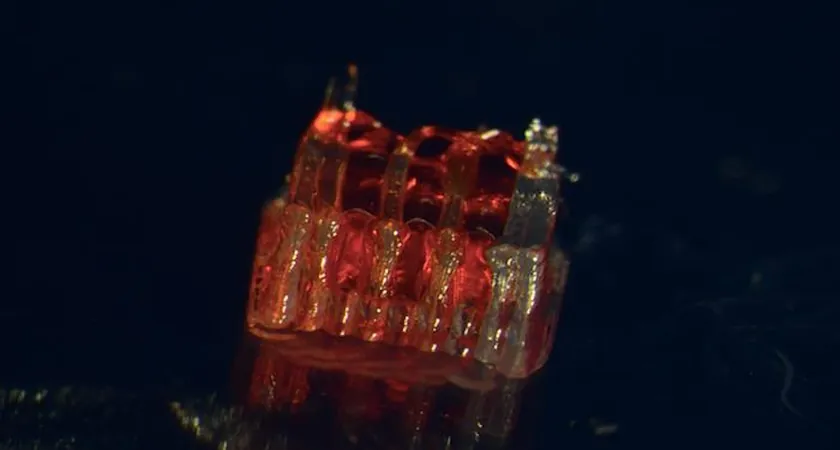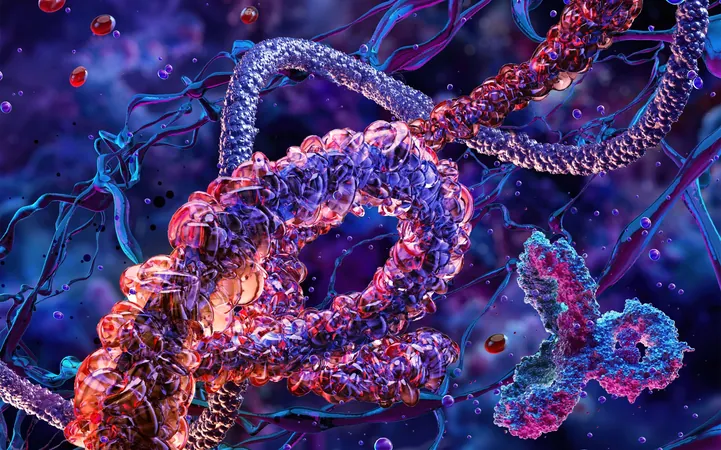
Revolutionary 3D-Printed 'Scaffolding' Could Pave the Way for Spinal Cord Injury Recovery
2025-08-30
Author: Yu
In a groundbreaking advancement that could change the lives of countless individuals, scientists in Minnesota have unveiled a 3D-printed solution aimed at repairing spinal cord injuries—and the initial results are incredibly promising.
Researchers at the University of Minnesota Twin Cities have combined cutting-edge 3D printing technology with stem cell biology and lab-grown tissues to create an innovative pathway for spinal cord healing.
Historically, spinal cord injuries have been notoriously difficult to treat, often resulting in permanent damage and paralysis due to the loss of nerve cells and the limited ability of nerve fibers to regenerate. But this pioneering research addresses these critical challenges by effectively building a bridge over the injury.
The team engineered a sophisticated 3D-printed framework, known as an organoid scaffold, featuring microscopic channels designed to facilitate nerve growth. These channels are populated with specialized spinal neural progenitor cells derived from adult human stem cells, which can mature into various types of cells essential for nerve function.
Dr. Guebum Han, a mechanical engineering researcher and lead author of the study, explained, "We utilize the 3D-printed channels to guide the stem cells' growth, ensuring that new nerve fibers advance in the intended direction." He adds, "This technique creates a relay system that bypasses the damaged areas when integrated into the spinal cord."
Supported by organizations such as the NIH and the Minnesota Spinal Cord Injury and Traumatic Brain Injury Research Grant Program, the study involved transplanting the 3D-printed scaffolds into rats with completely severed spinal cords.
The results were remarkable: the transplanted cells not only differentiated into functional neurons but also grew their nerve fibers toward both the head and tail, successfully reconnecting with the rat's existing nerve circuits.
Over time, these new nerve cells fused seamlessly with the host spinal tissue, resulting in significant functional recovery for the rats.
Dr. Ann Parr, a professor of neurosurgery at the University of Minnesota, noted the implications of this research, stating, "Regenerative medicine has ushered in a new era for spinal cord injury research. Our laboratory is eager to explore the clinical potential of our 'mini spinal cords.'"
While still in its early stages, this revolutionary research opens new doors of hope for individuals suffering from spinal cord injuries, with plans to ramp up production and improve this groundbreaking blend of technologies.




 Brasil (PT)
Brasil (PT)
 Canada (EN)
Canada (EN)
 Chile (ES)
Chile (ES)
 Česko (CS)
Česko (CS)
 대한민국 (KO)
대한민국 (KO)
 España (ES)
España (ES)
 France (FR)
France (FR)
 Hong Kong (EN)
Hong Kong (EN)
 Italia (IT)
Italia (IT)
 日本 (JA)
日本 (JA)
 Magyarország (HU)
Magyarország (HU)
 Norge (NO)
Norge (NO)
 Polska (PL)
Polska (PL)
 Schweiz (DE)
Schweiz (DE)
 Singapore (EN)
Singapore (EN)
 Sverige (SV)
Sverige (SV)
 Suomi (FI)
Suomi (FI)
 Türkiye (TR)
Türkiye (TR)
 الإمارات العربية المتحدة (AR)
الإمارات العربية المتحدة (AR)